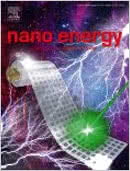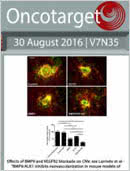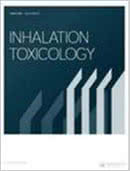원문
대한해협은 한반도와 일본 열도 사이에 위치한 황해, 남해 및 동중국해와 동해를 연결하는 폭이 약 200 km 정도인 수로이다. 대한해협은 쓰시마섬을 기점으로 동수도와 서수도로 나누어진다. 동수도는 폭이 약 140 km이고 수심은 약 110 m인 비교적 넓고 얕으며 평평한 모양이며, 서수도는 폭이 약 40 km이고 수심은 약 150~200 m인 좁고 깊게 움푹 들어간 모양이다(Fig. 1). 이 해협을 통과하는 주 흐름은 쓰시마난류로 동중국해의 열과 염을 동해로 전달한다. 동해로 유입된 쓰시마난류는 동해를 통과한 후 쓰가루 해협과 소야 해협을 통하여 태평양과 오호츠크해로 빠져나가는 동해통과류를 만들어내며 동해의 해수 순환에 주요한 역할을 한다(Moriyasu 1972; Cho and Kim 2000; Lee et al. 2000). 쓰시마난류는 가을에 가장 강하며, 서수도를 통과하는 흐름이 동수도를 통과하는 흐름보다 강하다(Miita and Ogawa 1984; Egawa et al. 1993).
Reference: //ocean.kisti.re.kr/downfile/volume/kordi/HOGBB1/2013/v35n2/HOGBB1_2013_v35n2_135.pdf
원문번역 The Korea Strait is an approximately 200 km - wide passage lying between the Korean Peninsula and the Japanese Archipelago, connecting Yellow sea, East China Sea, and East Sea. Tsushima Island divides the Korea Strait into the western and eastern channel (Tsushima). The eastern channel is relatively wide and shallow with a flat seabed and has approximate width of 140 km and approximate depth of 110 m. The western channel is relatively narrow and has a deep valley seabed with approximate width of 40 km and approximate depth of 150~200 m (Fig. 1). The main current passing through this straight is called the Tsushima warm current, which transports the warmth and salinity of the East China Sea to the East Sea. The Tsushima warm current first flows into the East Sea and then flows into the Pacific Ocean and the Sea of Okhotsk through the Tsugaru Strait and the La Pérouse Strait. Hence, the current has an important role of seawater circulation in the East Sea (Moriyasu 1972; Cho and Kim 2000; Lee et al. 2000). The Tsushima warm current is strongest in fall, and the current is stronger in the western than in eastern channel (Miita and Ogawa 1984; Egawa et al. 1993).
번역본 검토 The Korea Strait is an approximately 200 km - wide sea passage lyingthat lies between the Korean Peninsula and the Japanese Archipelago, connecting the Yellow sea, the East China Sea, and the East Sea. Tsushima Island divides the Korea Strait into the western and eastern channel (Tsushima).) and the western channel. The eastern channel is relatively wide and shallow with a flat seabed and has approximate width of 140 km and approximate depth of 110 m. The western channel is relatively narrow and has a deep valley-shaped seabed with approximate width of 40 km and approximate depth of 150~200 m (Fig. 1). The main current passing through this straight is called the Tsushima warm current, which transports the warmth and salinity of the East China Sea to the East Sea. The Tsushima warm current firstinitially flows into the East Sea and then flows into the Pacific Ocean and the Sea of Okhotsk through the Tsugaru Strait and the La Pérouse Strait. Hence, the current has an important role of circulating the seawater circulation in the East Sea (Moriyasu 1972; Cho and Kim 2000; Lee et al. 2000). The Tsushima warm current is strongest in fall, and the current is stronger in the western channel than in the eastern channel (Miita and Ogawa 1984; Egawa et al. 1993).
프리미엄 교정 The Korea Strait is an approximately 200- km - wide sea passage that lies between the Korean Peninsula and the Japanese Archipelago, connecting the Yellow sea, the East China Sea, and the East Sea. Tsushima Island divides the Korea Strait into the eastern channel (Tsushima) and the western channel. The eastern channel, with a flat seabed, is relatively wider and shallower with a flat seabed and has approximate (width: of 140 km; and approximate depth: of 110 m). than Tthe western channel (width: 40 km; depth: 150–200 m), which is relatively narrow and has a deep valley-shaped seabed with approximate width of 40 km and approximate depth of 150~200 m (Fig. 1). The main current passing through this straight is called the Tsushima warm current, which transports the warmth and salinity of the East China Sea to the East Sea. The Tsushima warm current initially flows into the East Sea and then flows into the Pacific Ocean and the Sea of Okhotsk through the Tsugaru Strait and the La Pérouse Strait. Hence Thus, the current has plays an the important role of circulating the seawater in the East Sea (Moriyasu 1972; Cho and Kim 2000; Lee et al. 2000). The Tsushima warm current is strongest in fallfrom September through November, and the current is stronger in the western channel than in the eastern channel (Miita and Ogawa 1984; Egawa et al. 1993).
최종 검토 The Korea Strait is an approximately 200-km-wide sea passage between the Korean Peninsula and the Japanese Archipelago, connecting the Yellow sea, the East China Sea, and the East Sea. Tsushima Island divides the Korea Strait into the eastern channel (Tsushima) and the western channel. The eastern channel, with a flat seabed, is wider and shallower (width: 140 km; depth: 110 m) than the western channel (width: 40 km; depth: 150–200 m), which has a deep valley-shaped seabed (Fig. 1). The main current passing through this straight is called the Tsushima warm current, which transports the warmth and salinity of the East China Sea to the East Sea. The Tsushima warm current initially flows into the East Sea and then into the Pacific Ocean and the Sea of Okhotsk through the Tsugaru Strait and the La Pérouse Strait. Thus, the current plays the important role of circulating the seawater in the East Sea (Moriyasu 1972; Cho and Kim 2000; Lee et al. 2000). The Tsushima warm current is strongest from September through November, and is stronger in the western channel than in the eastern channel (Miita and Ogawa 1984; Egawa et al. 1993).
일반교정 The Korea Strait is an approximately 200- km - wide sea passage that lies located between the Korean Peninsula and the Japanese Archipelago, connecting the Yellow sea, the East China Sea, and the East Sea. Tsushima Island divides the Korea Strait into the eastern channel (Tsushima) and the western channel. The eastern channel is relatively wide and shallow with a flat seabed and has an approximate width of 140 km and approximate depth of 110 m. The western channel is relatively narrow and has a deep valley-shaped seabed with an approximate width of 40 km and approximate depth of 150~–200 m (Fig. 1). The main current passing through this straight is called the Tsushima warm current, which transports the warmth and salinity of the East China Sea to the East Sea. The Tsushima warm current initially flows into the East Sea and then flows into the Pacific Ocean and the Sea of Okhotsk through the Tsugaru Strait and the La Pérouse Strait. Hence, the current has plays an the important role of circulating the seawater in the East Sea (Moriyasu 1972; Cho and Kim 2000; Lee et al. 2000). The Tsushima warm current is strongest in fall, and the current is stronger in the western channel than in the eastern channel (Miita and Ogawa 1984; Egawa et al. 1993).
최종검토 The Korea Strait is an approximately 200-km-wide sea passage located between the Korean Peninsula and the Japanese Archipelago, connecting the Yellow sea, the East China Sea, and the East Sea. Tsushima Island divides the Korea Strait into the eastern channel (Tsushima) and the western channel. The eastern channel is relatively wide and shallow with a flat seabed and has an approximate width of 140 km and depth of 110 m. The western channel is relatively narrow and has a deep valley-shaped seabed with an approximate width of 40 km and depth of 150–200 m (Fig. 1). The main current passing through this straight is called the Tsushima warm current, which transports the warmth and salinity of the East China Sea to the East Sea. The Tsushima warm current initially flows into the East Sea and then into the Pacific Ocean and the Sea of Okhotsk through the Tsugaru Strait and the La Pérouse Strait. Hence, the current plays the important role of circulating the seawater in the East Sea (Moriyasu 1972; Cho and Kim 2000; Lee et al. 2000). The Tsushima warm current is strongest in fall, and the current is stronger in the western channel than in the eastern channel (Miita and Ogawa 1984; Egawa et al. 1993).



